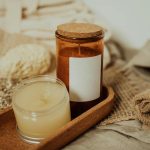You’ll find polypropylene fabrics in outdoor gear, sportswear, and industrial textiles because they’re lightweight, moisture-resistant, and durable. These fabrics include knits, nonwovens, and mesh designed for breathability and quick drying. Similar materials you might encounter are polyester, nylon, olefin, and acrylic, each offering specific strengths like abrasion resistance or insulation. If you want to understand how these fabrics differ and where they’re best used, exploring their unique properties can give you a clearer picture.
Table of Contents
Key Takeaways
- Polypropylene fabrics are made from a polymer with a carbon backbone and hydrophobic properties, offering moisture resistance and durability.
- Common polypropylene fabrics include outdoor gear textiles, industrial fabrics like geotextiles, and sportswear materials in knit, nonwoven, and mesh forms.
- Polypropylene textiles are lightweight, quick-drying, breathable, and resist stretching, suitable for activewear and travel.
- Similar fabrics to polypropylene include polyester, nylon, olefin, and acrylic, each with distinct strength, moisture resistance, and durability traits.
- Polypropylene is widely used in outdoor gear, home upholstery, automotive interiors, medical gowns, masks, and reusable bags due to its versatile properties.
Understanding the Chemical Structure of Polypropylene
Polypropylene’s chemical structure plays a key role in its unique properties and uses. When you look at polypropylene, you’re dealing with a polymer made from repeating units of propylene monomers. Each unit has a carbon backbone with hydrogen atoms attached, and the arrangement creates a semi-crystalline structure.
This structure gives polypropylene strength, durability, and resistance to moisture and chemicals. You’ll notice it’s lightweight yet tough, which makes it ideal for many applications.
The molecular chains can be oriented in different ways during manufacturing, affecting flexibility and melting point. Understanding this chemical makeup helps you see why polypropylene stands out among synthetic fibers, offering versatility for everything from packaging to textiles without breaking down easily or absorbing water.
Common Types of Polypropylene Fabrics
You’ll find polypropylene fabrics in a range of uses, from durable outdoor gear to heavy-duty industrial textiles.
Sportswear also often relies on this material for its lightweight and moisture-wicking properties.
Let’s explore how these common types differ and what makes each one unique.
Outdoor Use Fabrics
Outdoor environments demand fabrics that can handle sun, moisture, and rough use without losing their strength or color.
Polypropylene fabrics fit this bill perfectly, making them ideal for outdoor use. When you choose polypropylene for outdoor gear, you get excellent resistance to UV rays and water absorption, so your items won’t degrade or mildew easily.
You’ll find polypropylene in outdoor furniture covers, boat upholstery, and camping gear like tents and backpacks. Its lightweight nature keeps your gear easy to carry, while its durability stands up to abrasion and harsh weather.
Plus, polypropylene dries quickly, so you don’t have to worry about soggy fabrics. If you want reliable outdoor fabrics that combine strength, moisture resistance, and colorfastness, polypropylene is a smart choice.
Industrial Application Textiles
Beyond outdoor gear, polypropylene fabrics play a significant role in various industrial applications.
You’ll find them in geotextiles, where their durability and resistance to chemicals help with soil stabilization and erosion control.
When you handle filtration fabrics, polypropylene’s moisture-wicking and non-absorbent properties make it ideal for filtering liquids and gases efficiently.
If you work with protective clothing, polypropylene offers chemical resistance and lightweight comfort, making it suitable for disposable coveralls and lab coats.
You’ll also encounter polypropylene in ropes and nets, as its strength and resistance to UV damage guarantee long-lasting performance.
Sportswear Material Types
Although polypropylene fabrics are prized for industrial uses, they also excel in sportswear thanks to their lightweight, moisture-wicking, and quick-drying properties.
When you choose sportswear made from polypropylene, you get comfort and performance. Here are three common types you’ll encounter:
- Polypropylene Knit Fabric – Ideal for base layers and compression gear, it fits snugly and moves with you while managing sweat effectively.
- Nonwoven Polypropylene – Used in disposable sportswear items like shoe covers or protective sleeves, it’s breathable and lightweight.
- Polypropylene Mesh – Perfect for jerseys and shorts, this fabric offers excellent ventilation to keep you cool during intense activities.
Key Properties and Benefits of Polypropylene Textiles
You’ll appreciate how polypropylene fabrics resist moisture, keeping you dry even in damp conditions.
They’re lightweight yet tough, making them perfect for gear that needs to last.
Plus, their thermal insulation helps you stay comfortable in varying temperatures.
Moisture Resistance Features
Moisture resistance is one of polypropylene fabrics‘ standout qualities, making them ideal for environments where dampness is a concern. When you choose polypropylene, you benefit from its ability to repel water effectively, keeping you dry and comfortable.
Here’s why its moisture resistance works so well:
- Hydrophobic Nature: Polypropylene fibers naturally resist water absorption, preventing the fabric from becoming heavy or soggy.
- Quick Drying: Since it doesn’t hold moisture, polypropylene dries rapidly, reducing the risk of mold and mildew growth.
- Breathability: Despite repelling water, the fabric allows air circulation, helping manage sweat and maintain comfort during use.
These features make polypropylene textiles perfect for activewear, outdoor gear, and industrial applications where moisture control is essential.
Lightweight and Durability
Beyond its impressive moisture resistance, polypropylene also stands out for being exceptionally lightweight and durable.
When you choose polypropylene fabrics, you get materials that won’t weigh you down, making them perfect for activewear, outdoor gear, and travel clothing.
Their lightness doesn’t compromise strength; these fabrics resist wear, tear, and abrasion, so they hold up well even under frequent use.
You’ll find polypropylene textiles maintain their shape and resist stretching, giving you long-lasting performance.
Plus, their durability means they withstand harsh conditions without breaking down, ideal for rugged environments.
This combination of lightness and toughness guarantees you’re investing in fabrics that offer both comfort and resilience, supporting your active lifestyle without added bulk or quick deterioration.
Thermal Insulation Benefits
Although polypropylene fabrics are lightweight, they provide excellent thermal insulation that keeps you warm without adding bulk. You’ll find this fabric especially useful in cold conditions or during outdoor activities where maintaining body heat is essential.
Here’s why polypropylene excels at thermal insulation:
- Low Thermal Conductivity: It slows heat transfer, trapping warmth close to your body.
- Moisture Resistance: It repels water, so sweat doesn’t cool you down, helping you stay dry and warm.
- Air Trapping Fibers: Its structure traps air, adding an insulating layer that further retains heat.
When you wear polypropylene, you get warmth and comfort without the heavy feel, making it ideal for activewear, base layers, and thermal clothing.
How to Identify Polypropylene in Fabric Labels
When you check fabric labels, you’ll often find polypropylene listed as “PP” or spelled out fully. To identify it quickly, look for these abbreviations and check the fiber content percentage. Polypropylene fabrics are usually labeled with care instructions specific to synthetics, like low heat washing. Here’s a quick guide:
| Label Term | Abbreviation | Common Indicators |
|---|---|---|
| Polypropylene | PP | Synthetic, moisture-wicking |
| Polypropylene | Polypro | Lightweight, stain-resistant |
| Polypropylene | Polypropylen | Durable, quick-drying |
| Polypropylene | Polypropylene | Often found in activewear |
| Polypropylene | Polypropylen | Low heat wash, no bleach |
Fabrics Similar to Polypropylene and Their Uses
Several fabrics share qualities with polypropylene, making them popular alternatives depending on your needs. You might consider these three options:
- Polyester: Like polypropylene, it’s lightweight, durable, and moisture-resistant. It’s often used in activewear and outdoor gear.
- Nylon: Known for its strength and elasticity, nylon resists abrasion and dries quickly, making it great for sportswear and backpacks.
- Olefin: Another synthetic fabric similar to polypropylene, olefin offers excellent stain resistance and is commonly found in upholstery and carpets.
Each fabric offers unique benefits, but all share durability and moisture-wicking properties.
Durability and moisture-wicking are key features shared by all these versatile fabrics.
When choosing between them, think about your specific requirements like breathability, stretch, or resistance to wear and tear. This will help you find a fabric that fits your lifestyle without compromising on performance.
Practical Applications of Polypropylene and Related Fabrics
Understanding the qualities of polypropylene and similar fabrics helps you see why they’re favored across many industries.
You’ll find polypropylene in outdoor gear, like waterproof jackets and backpacks, because it resists moisture and dries quickly. It’s also popular in sportswear and activewear due to its lightweight and breathable nature.
When you need durable, easy-to-clean materials, polypropylene works well for upholstery and automotive interiors. In the medical field, you’ll encounter it in disposable gowns and masks, thanks to its strength and resistance to bacteria.
Additionally, polypropylene is common in home goods like rugs and reusable shopping bags, where durability and stain resistance matter.
Frequently Asked Questions
Is Polypropylene Fabric Biodegradable?
Polypropylene fabric isn’t biodegradable because it’s a synthetic plastic material. You’ll find it resists breaking down naturally, so it can persist in the environment for a long time, unlike natural fibers that decompose more easily.
How Does Polypropylene Compare to Cotton in Comfort?
You’ll find polypropylene less breathable than cotton, making it feel less comfortable in hot weather. However, it’s moisture-wicking and dries faster, so you’ll stay drier during workouts or outdoor activities compared to cotton.
Can Polypropylene Fabrics Be Recycled?
You’re in luck—polypropylene fabrics can join the eco-friendly party since they’re recyclable! While the process isn’t always straightforward, you can contribute to sustainability by properly sorting and sending them to specialized recycling facilities.
Are Polypropylene Fabrics Hypoallergenic?
You’ll find polypropylene fabrics are generally hypoallergenic because they resist moisture and bacteria, reducing irritation risks. So, if you have sensitive skin, these fabrics can be a comfortable, safe choice for your clothing or bedding.
What Are the Environmental Impacts of Polypropylene Production?
You’ll find polypropylene production uses non-renewable petroleum, emits greenhouse gases, and creates microplastic pollution. However, it’s energy-efficient to produce and recyclable, so managing waste responsibly can reduce its environmental footprint considerably.
- Where to Buy Sherpa Suede Fabric - July 12, 2025
- How to Draw or Illustrate the Texture of Suede Fabric - July 12, 2025
- What Is Baseball Suede Leather Fabric? - July 12, 2025





